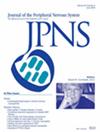Association Between MScanFit Motor Unit Number Estimation and Clinical Function and Response to Immunoglobulin Therapy in Chronic Inflammatory Demyelinating Polyneuropathy
Abstract
Background and Aims
Loss of motor units in chronic inflammatory demyelinating polyneuropathy is difficult to assess by conventional nerve conduction due to collateral innervation. We aimed to assess the association between a motor unit number estimate (MUNE) derived from the compound muscle action potential (CMAP) scan using MScanFit and hand function and the clinical response to intravenous immunoglobulin (IVIG).
Methods
Forty-nine CIDP patients and 52 control subjects were included. CMAP scan recordings were obtained from the right abductor pollicis brevis muscle. The primary outcome was the correlation between MUNE and the duration of the nine-hole-peg test (9-HPT) at baseline and the change in the duration of the 9-HPT following treatment with IVIG. Secondary outcomes were grip strength, 10-m-walk test, six-spot-step test, medical research council sum score, inflammatory neuropathy cause and treatment sensory sum score, overall neuropathy limitations scale, and the Rasch-built overall disability scale (R-ODS).
Results
MScanFit analysis suggested both loss of motor units (reduced MUNE (p = 0.022) and N50 (p < 0.0001)) and collateral reinnervation (increased median amplitude (p < 0.0001) and size of the largest unit (p < 0.0001)) in CIDP patients compared to controls. In CIDP patients, there was a statistically significant correlation between MUNE and the duration of the 9-HPT (Spearman's r = −0.342; p = 0.016). Further, patients with a low MUNE had the largest reduction in the duration of the 9-HPT following IVIG treatment (r = −0.577; p = 0.043). MUNE also correlated significantly with R-ODS (r = −0.722; p = 0.007).
Interpretation
MScanFit MUNE could be a useful method for assessing motor axonal loss in CIDP, which correlates with the clinical function and treatment response.


 求助内容:
求助内容: 应助结果提醒方式:
应助结果提醒方式:


